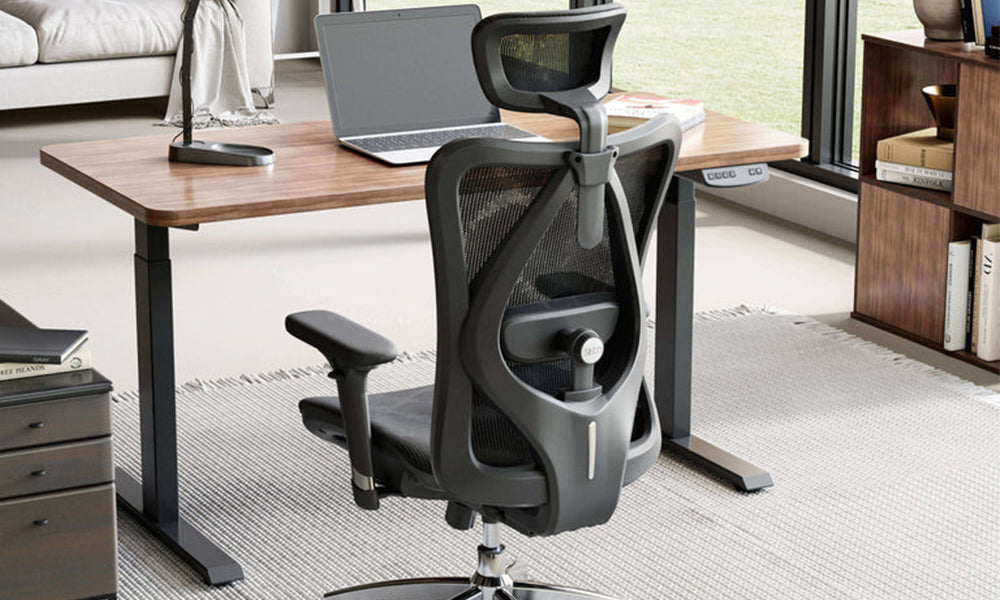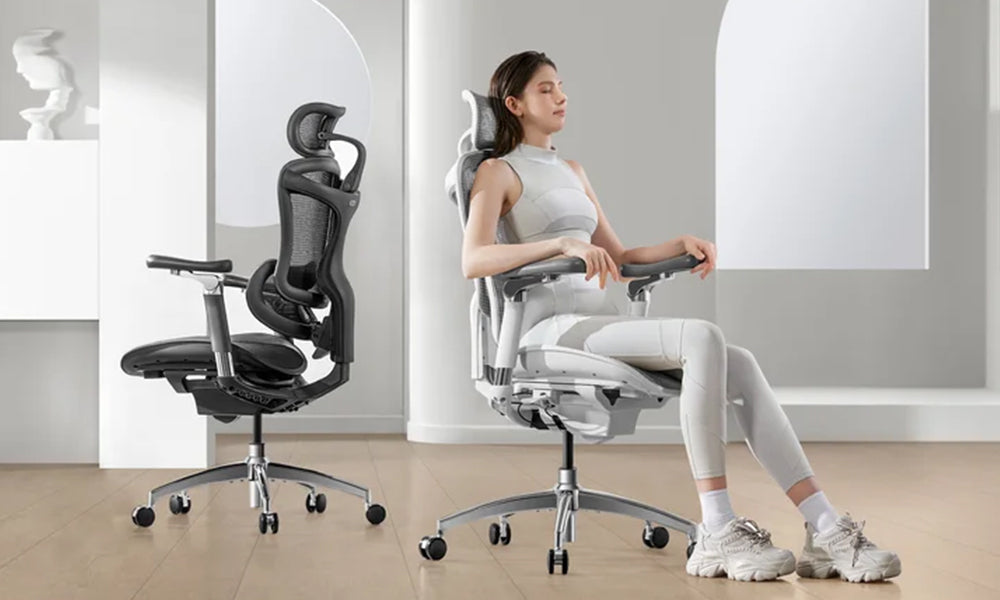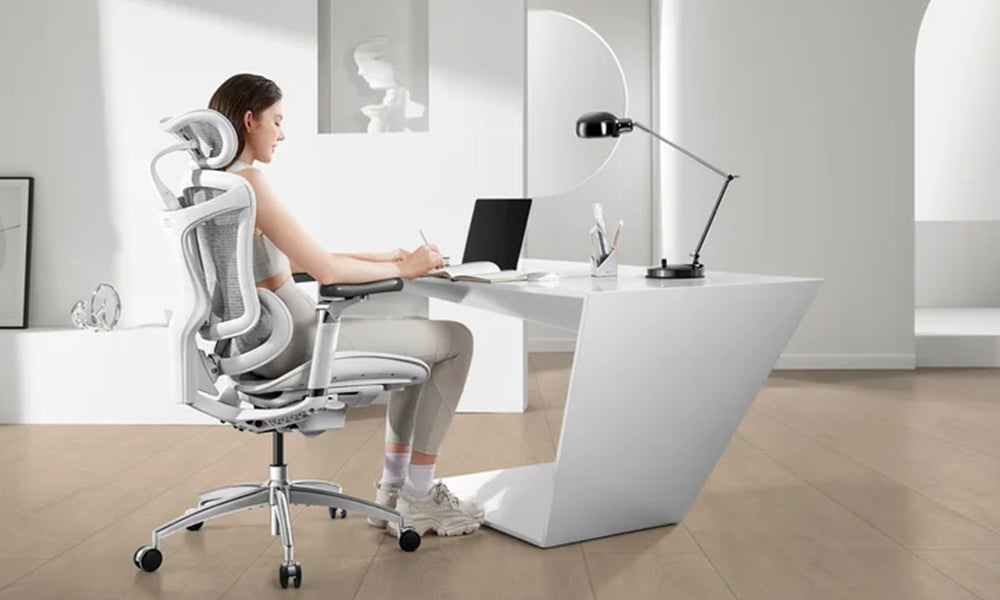If you've ever experienced the frustration of sitting in an office chair that keeps sinking down when you least expect it, you're not alone. A sinking office chair can be not only annoying but also detrimental to your posture and overall comfort at work. Fortunately, there are several methods to tackle this common issue and restore your office chair's functionality. In this comprehensive guide, we will walk you through the steps to fix an office chair that won't stay up.
Introduction
Office chairs are essential components of any workspace, providing comfort and support during long hours of work. However, over time, these chairs may develop issues, one of the most common being the inability to stay at the desired height. When your office chair constantly sinks down, it can lead to discomfort, poor posture, and reduced productivity. But fear not, as we are here to help you resolve this problem and get your chair back in working order.
Understanding the Problem
Before we delve into the solutions, it's crucial to understand why your office chair might not be staying up. The most common reason is a malfunctioning gas cylinder, also known as a pneumatic lift. This component is responsible for adjusting the chair's height, and if it's faulty, your chair won't stay in the position you set. Other potential causes include worn-out components, loose screws, or damaged levers.
Tools and Materials You'll Need
Before attempting any repairs, gather the necessary tools and materials. Here's a list of items you'll need:
Replacement Gas Cylinder: If your gas cylinder is the issue, you'll need a new one. Make sure it's compatible with your chair model.
Screwdriver: You'll need both a Phillips-head and a flat-head screwdriver for various tasks.
Wrench: A wrench will be useful for tightening loose bolts and nuts.
Rubber Mallet: This tool can help you gently tap parts into place without causing damage.
Lubricant: A lubricant such as WD-40 can be handy for loosening stuck parts.
Safety Gear: Wear safety glasses to protect your eyes, especially when dealing with springs and gas cylinders.
Now that you have your tools and materials ready, let's move on to the step-by-step process of fixing your sinking office chair.
Step 1: Safety First
Before you begin any repairs, ensure your safety. Put on safety glasses to protect your eyes from any unexpected debris or fluids that might come out during the repair process.
Step 2: Remove the Chair from the Base
To access the chair's internal components, you'll need to remove the chair from its base. Follow these steps:
Flip the Chair: Carefully turn the chair upside down, so you have access to the base.
Locate the Fasteners: Look for fasteners that attach the chair to the base. These are typically screws or bolts.
Unfasten the Chair: Using a suitable screwdriver or wrench, remove the fasteners. Keep them in a safe place as you'll need them later.
Separate the Chair and Base: Once the fasteners are removed, carefully separate the chair from the base. Set the base aside for now.
Step 3: Inspect the Gas Cylinder
The gas cylinder is the most likely culprit when it comes to a sinking office chair. Here's how to inspect it:
Locate the Gas Cylinder: The gas cylinder is the vertical tube connecting the chair to the base.
Check for Damage: Examine the gas cylinder for any visible damage, such as dents or leaks. If you notice any, it's a clear indication that you need to replace it.
Test the Movement: Push the chair down to its lowest height and then raise it to its highest position. If it doesn't hold its height or if it feels unstable, the gas cylinder is likely the issue.
Step 4: Replace the Gas Cylinder
If the gas cylinder is indeed the problem, it's time to replace it. Follow these steps:
Measure the Cylinder: Measure the length of the existing gas cylinder, from end to end, to ensure you purchase a replacement of the correct size.
Order a Replacement: Order a replacement gas cylinder that matches the measurements and specifications of your old one. Many office chair manufacturers offer replacement parts, or you can find compatible cylinders from online retailers.
Remove the Old Cylinder: To remove the old cylinder, you may need to use a rubber mallet to tap it gently if it's stuck. Twist and pull it out of the chair's base. Be cautious not to damage any surrounding parts during this process.
Install the New Cylinder: Insert the new gas cylinder into the chair's base, making sure it's securely in place.
Reassemble the Chair: Put the chair back onto the base and reattach it using the fasteners you removed earlier. Tighten them securely.
Step 5: Check for Loose Screws and Bolts
Loose screws or bolts can also cause your office chair to sink. Here's how to identify and fix this issue:
Inspect the Chair Frame: Look for any loose screws or bolts on the chair's frame, especially in the areas where the chair adjusts its height.
Tighten Loose Fasteners: Using your screwdriver or wrench, tighten any loose screws or bolts you find. Ensure they are snug but not overly tight to avoid damaging the chair.
Step 6: Lubricate Moving Parts
Sometimes, the chair's moving parts, such as the height adjustment lever or tilt mechanism, can become stiff or jammed, preventing the chair from staying in place. Here's how to address this:
Identify the Problem Area: Determine which part is causing the issue by testing each moving component.
Apply Lubricant: If you find a part that's not moving smoothly, apply a lubricant like WD-40 to the affected area. Move the part back and forth to distribute the lubricant evenly.
Test the Chair: After lubrication, test the chair's height adjustment and tilt mechanisms to see if they now function properly.
Step 7: Check for Worn-out Parts
Over time, various components of your office chair may wear out, affecting its ability to stay in position. Here's how to identify and replace worn-out parts:
Examine the Chair's Mechanics: Carefully inspect all the mechanical components of your chair, including the wheels, casters, and levers.
Identify Worn-out Parts: Look for any parts that show signs of excessive wear, such as cracked or damaged levers, worn-out casters, or damaged wheels.
Order Replacement Parts: If you identify any worn-out parts, order suitable replacement components from the chair's manufacturer or a reliable supplier.
Replace Worn Parts: Once you have the replacement parts, follow the manufacturer's instructions to install them properly.
Step 8: Test Your Repairs
After completing all the necessary repairs and replacements, it's essential to test your office chair to ensure it's working correctly. Adjust the chair's height, tilt, and other features to ensure they function as intended. Sit in the chair for a while to confirm that it remains at your desired height without sinking down unexpectedly. Pay attention to any unusual noises or movements that might indicate further issues.
Step 9: Regular Maintenance
To prevent future problems with your office chair, consider implementing a regular maintenance routine. Here are some tips to keep your chair in good working condition:
Clean Regularly: Dust and debris can accumulate in the moving parts of your chair, affecting its functionality. Periodically clean your chair to remove dirt and grime.
Check for Loose Fasteners: Every few months, inspect your chair for loose screws or bolts and tighten them as needed.
Lubricate Moving Parts: Apply lubricant to moving parts, such as the height adjustment mechanism and tilt mechanism, to keep them operating smoothly.
Replace Worn-out Parts: Keep an eye out for any signs of wear and tear, and replace worn-out components promptly to avoid more significant problems.
Adjust Chair Settings: Make sure your chair is set up correctly for your body and work environment. Adjust the seat height, lumbar support, and armrests to ensure maximum comfort and ergonomic support.
When to Seek Professional Help
While many office chair issues can be resolved with DIY repairs, there are cases where it's best to seek professional assistance. Consider contacting a professional if:
You're Unsure About the Problem: If you're not confident about diagnosing the issue or making the necessary repairs, it's better to consult a professional to avoid causing further damage.
The Chair is Under Warranty: If your office chair is still under warranty, attempting DIY repairs may void the warranty. Contact the manufacturer or retailer to inquire about warranty coverage and repair options.
The Chair is High-End or Specialized: High-end or specialized office chairs may have complex mechanisms that require specialized knowledge and tools for repairs. In such cases, it's advisable to consult a professional.
The Chair Has Structural Damage: If your chair has suffered structural damage, such as a cracked frame or bent components, it may not be safe to repair it yourself. Seek professional advice or consider replacing the chair.
Conclusion
A sinking office chair can be a major source of frustration in your work environment, but with the right tools and a bit of know-how, you can often fix the problem yourself. By following the steps outlined in this comprehensive guide, you can address common issues that cause an office chair to lose its height adjustment capabilities. Remember to prioritize safety, use the correct tools, and follow the manufacturer's guidelines when making repairs.
Regular maintenance is key to preventing future problems with your office chair. Implementing a maintenance routine, including cleaning, lubricating, and inspecting for wear and tear, can extend the lifespan of your chair and keep it in optimal working condition.
In the end, a well-maintained office chair not only promotes comfort and productivity but also contributes to your overall well-being by supporting good posture and reducing the risk of discomfort and injury during long hours of work. So, roll up your sleeves, grab your tools, and get ready to fix that sinking office chair and improve your workspace for the better.



